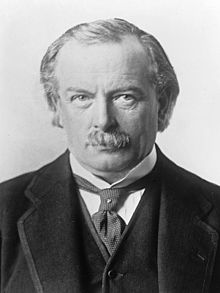
Back Munitionskrise von 1915 German Crise des obus de 1915 French Снарядный кризис 1915 года Russian 1915 Mermi Krizi Turkish 1915年弹药危机 Chinese

The Shell Crisis of 1915 was a shortage of artillery shells on the front lines in the First World War that led to a political crisis in the United Kingdom. Previous military experience led to an over-reliance on shrapnel to attack infantry in the open, which was negated by the resort to trench warfare, for which high-explosive shell were better suited.[1] At the start of the war there was a revolution in doctrine: instead of the idea that artillery was a useful support for infantry attacks, the new doctrine held that heavy guns alone would control the battlefield. Because of the stable lines on the Western Front, it was easy to build railway lines that delivered all the shells the factories could produce. The 'shell scandal' emerged in 1915 because the high rate of fire over a long period was not anticipated and the stock of shells became depleted.[2] The inciting incident was the disastrous Battle of Aubers, which reportedly had been stymied by a lack of shells.
The shortage was widely publicised in the press. The Times, in cooperation with David Lloyd George and Lord Northcliffe, sought to force Parliament to adopt a national munitions policy with centralised control. This resulted in a transfer of the Munitions Department from the War Office to a cabinet level position in government, and a coalition government with Lloyd George as Minister of Munitions. In 1916 the long-term effects included the fall of the Prime Minister H. H. Asquith and his replacement by Lloyd George in December 1916.[3]
- ^ Strachan 2001, pp. 992–1, 105.
- ^ French 1979, pp. 192–205.
- ^ Fraser 1983, pp. 77–94.
© MMXXIII Rich X Search. We shall prevail. All rights reserved. Rich X Search